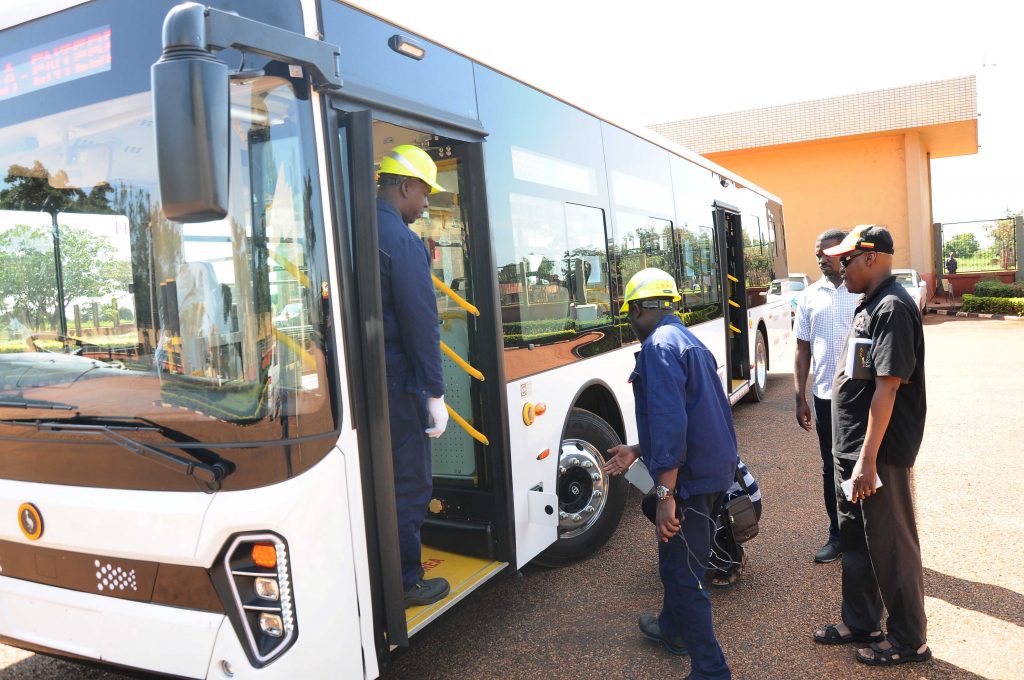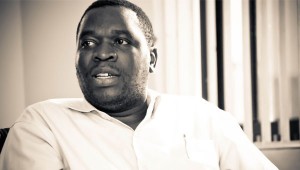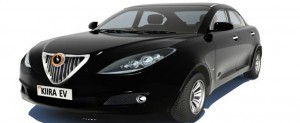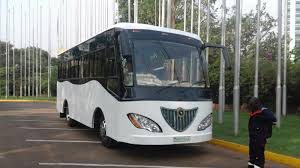The Business Interview: Paul Isaac Musasizi, man on the innovation trapeze

This week marks a coming of age of sorts for Kiira Motors Corporation. One of the Ugandan automotive integrator’s creations, the Kayoola Solar Bus, will in the coming days be on display in the Kenyan capital Nairobi where it is the lead Green Mobility Exhibitor at the UN Sustainable Technology Expo. 256 Business news spoke to Kiira Motors Chief Executive Paul Isaac Musasizi.
 KAMPALA, MAY 21 – It may not be very accurate to call Paul Isaac Musasizi an accidental engineer but that description is not so far off the mark. The chief executive at Kiira Motors Corporation and team leader of a group of young driven Ugandans trying to get their country a berth in the global automotive industry chose to study mechanical engineering just to spite a domineering father who wanted him to pursue a career in medicine.
KAMPALA, MAY 21 – It may not be very accurate to call Paul Isaac Musasizi an accidental engineer but that description is not so far off the mark. The chief executive at Kiira Motors Corporation and team leader of a group of young driven Ugandans trying to get their country a berth in the global automotive industry chose to study mechanical engineering just to spite a domineering father who wanted him to pursue a career in medicine.
“I used to do very well in Biology but it was now my turn to show that I can make my own decisions. I am glad I went for engineering especially mechanical engineering which had scarcity in the country and yet it is the foundation of manufacturing and therefore economic development,” he tells 256BN.
In 2007, Musasizi veered from his teaching job at Makerere University’s College of Engineering to join Professor Sunday Stevens Tickodri-Togboa, now Minister for Science and Technology, to begin work on Uganda’s first electric vehicle the Kiira EV, unveiled to the public in November 2011. Since then two other concept vehicles – the Kiira EV Smack hybrid electric- ICE (Internal Combustion Engine) passenger sedan and the all electric Kayoola Solar Bus have been produced. It is the latter that has caught the rave and is this month featuring as the Green Mobility exhibitor at the UN Sustainable Innovation Expo that is running on the sidelines of the United Nations Environmental Assembly in Nairobi.
While some doubt the wisdom of his quest into an industry whose future is the subject of intense debate after 130 years of existence and the automobile always at the centre of any discussions of a rapidly warming planet, Musasizi sees this as Africa’s moment.
After missing out on earlier phases of the industrial revolution, he sees the current challenges to sustaining earths’ civilisation as Africa’s opportunity because with innovation, the world is just a stage on which the talented can play. Besides, driving is not about to die as the aspiration for a majority of people for decades to come and meeting this need in an environmentally sustainable manner can propel former underlings such as Uganda to the high table of the global automotive value chain.
“The motor vehicle will remain as the predominant transportation technology not only in East Africa but globally for the next 50 to 100 years. That is because mass transportation systems, much as they are economically and environmentally efficient don’t quite address the last mile. We have had so many debates about alternatives such as non-motorized transportation, tricycles and things like this but the last mile especially in Africa is still significant,” he reasons.
From his vantage point he sees that in many places today, when one gets off the bus or train at the station, they still have one to six kilometers to get home, or to the office. In Africa, farm produce still has to be conveyed to markets from places way off the main infrastructure grid.
“The motor vehicle is going to be a critical ingredient of the solution to that problem. The movement of people and goods is a critical ingredient of economic transformation in Africa and what we in East Africa are saying as a community is how do we harmonize interventions that will advance value addition in the automotive industry value chain and how do we create the policy framework that ensures that it is rationalized?”
While he is the first to admit that he is not reinventing the wheel Kiira Motors is up against an already established pecking order in the automotive industry, its value proposition is premised against the two core gaps in the industry today; affordable asset financing for vehicle financing and after-sales service and support.
“Our interventions will focus on closing these gaps as the key strategy for market share acquisition. From a policy perspective, it’s important that issues of technology quality especially safety and environmental protection are addressed which will inadvertently give rise to a roadmap winning off importation of rather obsolete vehicle technology and sub-standard spare parts. Such interventions are expected to cultivate growth of new vehicle sales. Production for export to the EAC and neighboring regional economic communities is a key ingredient of the growth plan for sales.”
So where does a solar-powered bus fit into all this? The pollution mess that Africa and the world’s major population centres are today, and the potential for a zero tailpipe emissions transport solution in this setting.
“The aspiration for green, clean, and noise free transport solution for urban mass mobility and enhancing environmental stewardship inspired the making of a solar powered vehicle. The sustainability of mission vehicles made in Uganda is based on production of eco-friendly and internationally acceptable technology and products for global competitiveness,” he says adding that the Kayoola Solar Bus prospects a green, clean, and noise free transport solution for urban mass mobility, representing a commitment to transportation technologies that enhance environmental stewardship.
The Kayoola Solar Bus uniqueness is evident from the commitment it represents for Africa to championing urban mass mobility solutions based on clean and green technology.
Africa’s geographical position almost symmetrically along the equator implying non-stop sun around the year provides an underutilized natural and renewable energy resource which should be explored to fuel urban mass mobility.
Kampala, where Musasizi resides is enough inspiration for him. The use of private mobility automobiles is significant in the city and this is placing a big traffic burden on the limited road infrastructure.
Kampala has a mass mobility system that mainly utilizes 14-Passenger vans for intra and intercity mass mobility. The Projected mass mobility demand growth in the city is estimated to be five times in the next three years, exceeding more than 700,000 passengers per day while the neighboring routes feeding into Kampala such as Jinja, Entebbe, Masaka and Bombo road are expected to have 500,000, 200,000 and 300,000 passengers per day respectively. Kampala Capital City Authority has an existing demand for at least 500 buses for its major routes. The Kayoola Solar Bus promises a green, clean, and noise free future transport solution for a busy city like Kampala and other urban Centres in Africa. With nonstop sun in Africa the use of solar powered vehicles for mass mobility is the way to go for urban mass mobility.
Kiira Motors will start production of motor vehicles in 2018 with a product mix including Pickups, SUVs, Sedans, Light and Medium Duty Trucks and Buses. The first batch of Vehicles will be running on fossil fuels with an Internal Combustion Engine. However, the Kiira Vehicle Technology Program will continue exploring Green Mobility Technology for Africa with the hope of having vehicles like the Kayoola Solar Bus on the road in the 5-10 year period depending on how fast the charging and support infrastructure for EV Power-trains can be developed.
According to Musasizi, the concept vehicles so far developed demonstrate progressive enhancement of resident capacity in vehicle manufacturing. Production will start with 305 vehicles in 2018 and it is envisaged that by 2021, production would have reached 1,125 units annually.
So how long will it take the African indigenous auto manufacturing industry to competently rival those of the western world?
The goal at KMC is to respond to the indigenous needs of the African people in the automotive Industry he says. “If we can achieve this and solve the problems barring the African auto industry, we shall be the biggest players in a virgin territory with a growing market and that alone is competition enough.
But we also need to appreciate that we are not going to reinvent the wheel, the days of Lord Ford and Sir Bentley and William Maybach are kind of gone. Now what we want to be able to do is to recognize that these very well established people also have tested technology and it is not going to be very easy to convince the client here who can get tested technology to abandon it and try something new until it works. That is why the strategic alliances become important. They are looking for a market and we can cultivate mutually beneficial partnerships. “
The Kiira Motors Corporation Complex, being developed in Jinja 80 kilometres east of Kampala, is expected to contribute to the Ugandan government’s drive to reduce poverty and bring about socio-economic transformation by creating a number of direct and indirect employment opportunities throughout the local, regional and national landscape. In the capital expenditure phase, KMC is expected tol create over 12,000 Jobs while the operational expenditure phase shall create another 2,000 plus jobs.
“KMC’s operational effects shall also provide an affordable mix of vehicle products; create employment opportunities with varied skill levels; encourage private investment opportunities in local companies providing support to the emerging automotive industry; lead to an ultimate boost to economic development and GDP growth,” Musasizi believes.
For all his ambitions Musasizi suffers no illusions. He knows the road ahead will be a long and twisted one. For instance he knows that until he has achieved volume, it will be foolhardy to embark on certain aspects of production just for the prestige of it.
“One of the things we need to appreciate is that even the infrastructure that delivers these facilities depends on sales milestones. If you cannot produce 5000 vehicles you cannot support a fully-fledged paint shop. If you cannot produce 15,000 vehicles a year, you cannot support a fully-fledged body shop. You can have a few of those functions here and there being done rudimentary but the economies do not work very well and we have factored all those aspects into our work. That at this point we should be touching 5000 units, this point you should be touching these units so that you can move from Semi-knocked down in terms of your manufacturing process to Completely-knocked down. On the other hand innovation grows because as manufacturing is going on one track, on the other side innovation is also on going. It is very critical and that is why I will again re-echo the point of us tapping into the global market and pushing our product there.”
It makes sense. The Nigerians have expressed interest in the Kayoola solar bus but without strategic partnerships with established original equipment manufacturers, KMC would be hard pressed to deliver it to market fast enough.
“The Nigerians are interested in partnering with us so that they can scale it up all over Africa because here, we have mature electric vehicle technology. The value of these concept vehicles is to attract the right partners,” he concludes.



 African Heads of state head to South Korea next week for Summit talks
African Heads of state head to South Korea next week for Summit talks
 Trading leads as main source of income for Ugandans
Trading leads as main source of income for Ugandans
 New leadership for bankers’ umbrella as total assets top $12 billion
New leadership for bankers’ umbrella as total assets top $12 billion
 Brussels Airlines to announce Nairobi service
Brussels Airlines to announce Nairobi service
 SITA promises enhanced travel experience after Materna acquisition
SITA promises enhanced travel experience after Materna acquisition
 Saudia’s 105 aircraft order stretches A320neo lead over rival Max
Saudia’s 105 aircraft order stretches A320neo lead over rival Max
